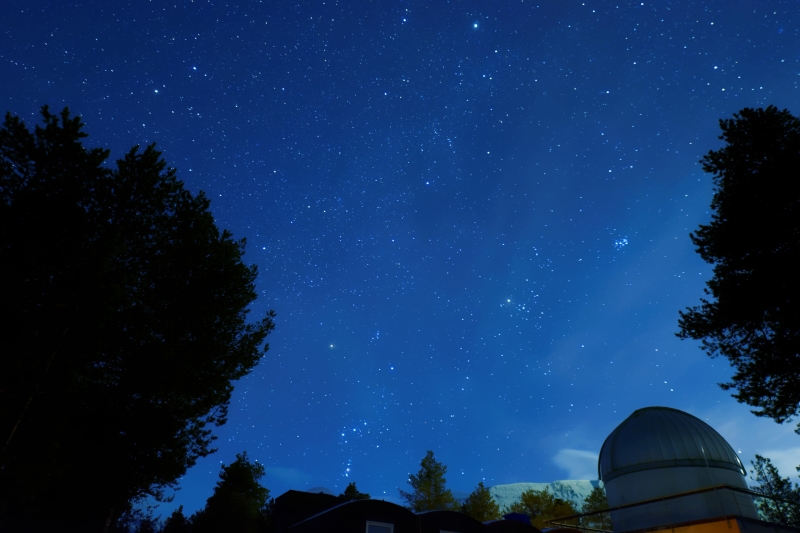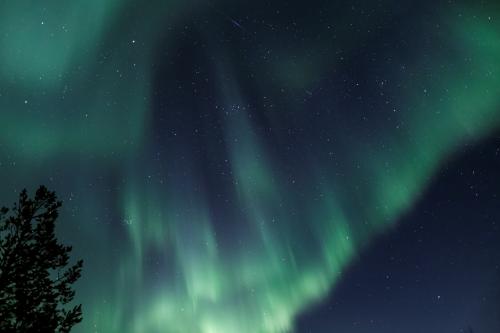The edge of the world, where would that be? Our great-great-great-many-times-great grandfathers and grandmothers pondered this question with conviction that it must be found somewhere. Of course, now we know there is no end or edge (though sadly some individuals in the world appear not to have grasped this idea yet), but there are still places where you can see the ‘end of our world’ and maybe feel like you’re there.
At the poles of our Earthly globe, the magnetic field plunges into the Earth to connect to the metallic core that is powering it, with a particularly peculiar side effect being the emergence of aurora in those regions. The glowing and undulating structures in the skies are evidence that something foreign –the energetic particles being blown our way by the sun- has been interacting with the magnetic field surrounding us. The interaction happens in several complex stages, with the end result being that oxygen or nitrogen atoms of Earth’s atmosphere are given extra energy. They then proceed to re-emit that energy in the form of light, with different colours corresponding to different amounts of energy or different atoms, at different heights in the atmosphere: red (oxygen above 200 km), green (oxygen between 100 and 200 km) and purple/blue (nitrogen below 100 km).
--Related to this article: Emmanuel Dekemper's personal account of the team's adventures in Norway--
How can we ‘see’ the magnetic field?
The same way that light waves coming from distant stars carry information about these stars, light emitted by the aurora also carries information. More particular about the magnetic field lines, since they have a close relationship as explained above. Scientists, with the help of engineers, can decode that information by looking at one characteristic of that light: its polarisation. This is a measure of the direction of the electric field of the light wave. Most of the light that we see is unpolarised, meaning that the electric field of the wave points in all directions.

When light bounces off a surface, the direction of the field changes, and the waves following the same path tend to have electric and magnetic fields pointing more often in one specific direction. For instance, the light from the Sun that bounces off the Moon, and then again bounces off the molecules in the Earth’s atmosphere, becomes polarised before it reaches our eyes. In short, the more the light is polarised, the more it has been interacting with something between its creation and its detection. Applying this to the light emitted by the atoms in the atmosphere, it can tell us how the electric fields have been interacting with the magnetic field lines of the Earth.
How can we ‘see’ polarisation?
Now, detecting the polarisation of light can be tricky. You can’t just see it (that would be too easy). Physicists and engineers at BIRA-IASB are using two approaches: PLIP (Polar Lights Imaging Polarimeter) and ASPA (AOTF-based Spectro-Polarimeter for Auroras), which they went to test at the observatory of Skibotn in the northern parts of chilly Norway.
Why in February? The nights had to be long enough to increase the chances of seeing the aurora, and it couldn’t be too cold for the instruments to work properly. The temperatures at night were already a challenge for this mission: trying to keep a metal box at around room temperature for hours in -10°C outside temperature, and sitting on it won’t help. Keeping this in mind, the end of winter or the end of autumn are the best moments for aurora field research.
Scientists Hervé Lamy, Gaël Cessateur, Emmanuel Dekemper and engineer Jurgen Vanhamel travelled far up north to develop and test the new ASPA instrument. Additionally, the PLIP instrument (Polar Lights Imaging Polarimeter) was further developed during his second journey to the observatory. This is how the instruments work.
PLIP
PLIP is a twin set of adapted cameras. The infrared filters were removed and replaced by filters that allow only the red and green colours to pass. This is to make sure that we can nicely see the red part of the light spectrum, which has been confirmed by several studies to be polarised. The green light, on the contrary, should -in theory- not be polarised.

Set up side by side, they look at the same area of the sky. The only difference between the two cameras is that they are also equipped with polarisers. One polariser is at 0° while the other is at 90°. Hence, they can each measure one direction of polarisation. Together they enable us to make estimates of the polarisation of the auroral light emissions.
Afterwards, we superimpose both images from the two cameras, using stars in the background to make sure they align perfectly. Additionally, we analyse a small group of pixels at a time in order to detect the polarisation of the light, and if so to what degree.
ASPA
The idea for ASPA came only very recently. The instrument was developed in a short timeframe, in order to have it ready for a first test in the field. The innovative element of ASPA is its use of an AOTF (Acousto-Optical Tunable Filter) as polarising filter. This kind of filter is already used in other instruments at BIRA-IASB (e.g. the ALTIUS mission) and made its way to aurora research thanks to interdisciplinary communication and collaboration.
The AOTF filter is composed of a Tellurium Dioxide crystal (TeO2). The working principle behind the AOTF is the birefringence. Applying an RF-signal (Radio-Frequency) to the crystal generates soundwaves inside the device, in this way selecting the different optical wavelengths that are allowed through. For this we need an RF-generator-amplifier combination. Two optical beams are generated at the output of the AOTF, making it possible to determine the two different polarisation states. By this, the degree of polarisation of that captured light can be measured.
The main difference between PLIP and ASPA is that the former is able to take wide images of the aurora with some information about the degree of polarisation, but a poor spectral selectivity. Whereas the latter has a very small field of view, but has a much higher polarisation sensitivity and spectral selectivity. A nice example of complementarity of two scientific approaches.
Challenges of Scientific Field Work
Before the team could even attempt to make the first measurements in the field with ASPA, other obstacles popped up that go along with scientific field work above the polar circle! Jurgen gives his account of the engineering challenges below. (Recommended reading: Emmanuel's personal account of the Norway voyage.)
Jurgen
The ASPA instrument is conceived to observe (possible) polarisation of the aurora. So we took ASPA to perform measurements at the observatory in Skibotn, in northern Norway, a place that has all the necessary facilities to study the northern lights. At the observatory, we joined a French team who were also performing their own measurements of the aurora.
As the law of Murphy states, some things are bound to go wrong, and we had some issues with the delivery of our instrument. One box even ended up in Madrid! It took a few days before we received two out of the three packages, and we had to embark on a bumpy (and snowy) ride from Skibotn to Tromsø and back in order to pick up the material. You really have to be careful while driving on a snowy and slippery road! We aren’t used to that.
Due to the lack of the aforementioned material (that ended up on the other side of Europe), we had to go to the university in Tromsø, to see if they could help us with our missing pieces. Luckily, they were happy to help us and they provided us with some crucial elements. Using their material, we were (finally!) able to perform some first measurements with ASPA. A few days later, the missing box arrived and we were able to reassemble the instrument as was initially foreseen, but not without another five-hour drive to Tromsø and back!
From an engineering point of view, the instrument performed very well. It was placed outside in the harsh, cold and windy environment of Norway. Temperatures got quite low (-10°C) and the wind made it even colder. We also had to make sure that the instrument was placed on a solid surface, in order to obtain reliable and good measurements. Due to the design and the use of a heating system inside the instrument housing, the temperature inside the box was maintained at a comfortable 16°C. In this way, the electronics and optics can survive the cold conditions. The optical results showed a clear sensitivity of the instrument to the observed auroras.
Forces of Nature
Unfortunately, another challenge of studying the aurora is the fickle nature of the phenomenon. It’s nearly impossible to predict if and when aurora will be visible and how strong it will be (many factors are in play, like solar activity, clouds, moonlight or light pollution,…). During the 10 day-mission, the auroras were weak or absent, while the instruments need a strong signal (enough light) in order to produce meaningful data. Furthermore, the Moon was very present, and as explained earlier, moonlight is polarised and ‘pollutes’ the data. Although PLIP was just able to capture some northern lights, ASPA had trouble getting a strong enough signal to generate meaningful data. The good news is that the instruments both performed as expected and are ready to be tested again during the next mission, planned for October of this year. We’re looking forward to try again with some more luck and stronger auroras.

Video of the Aurora
Video of the Aurora, captured by PLIP in 2019.



